Climate Disasters on the Planet from April 24 to April 30, 2024: Summary
Europe
On April 23, a sandstorm engulfed Athens and other cities in Greece, tinting the sky a vivid orange color.
This storm was the strongest the country has experienced since 2018.
The sandstorm passed through several European countries and, contrary to meteorologists' forecasts, reached Russian territory.
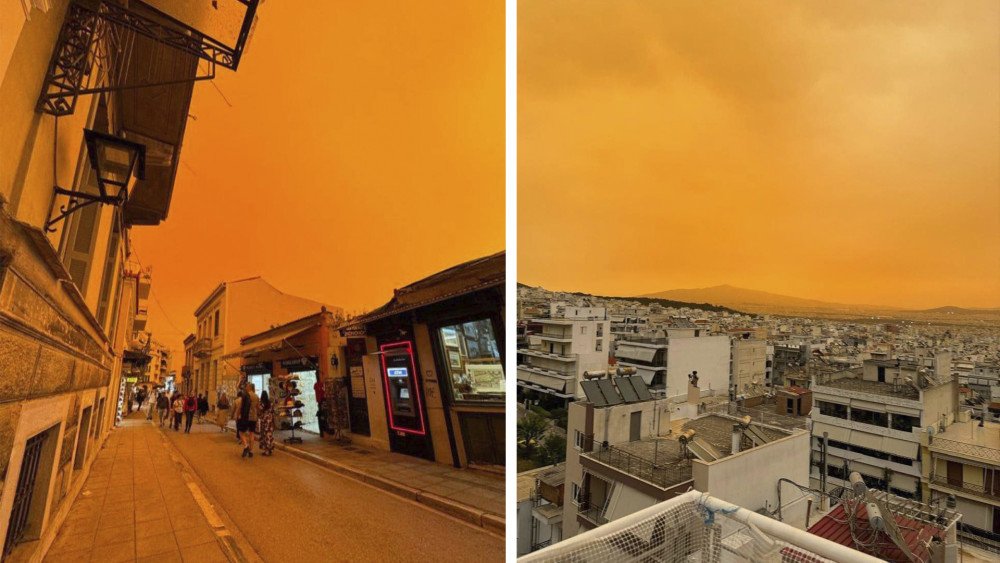
The sandstorm originating from the Sahara, Athens, Greece
In the European part of Russia, “rusty” rains occurred. The sky was cloudy and yellowish in color.
It is worth noting that
for the European part of Russia, this is a rare phenomenon,
but now
Saharan dust has already arrived twice in a month
and has moved deeper into the region, reaching Moscow and Tver.
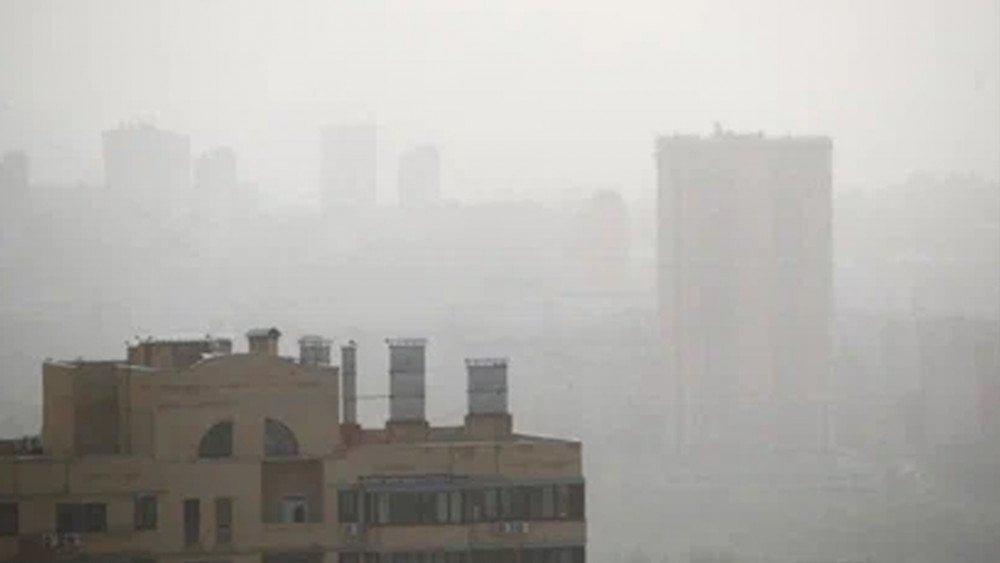
Sandstorm from the Sahara, Volgograd Region, Russia
At the same time, a sandstorm covered Primorye. The dust came here from China.
Dust is often mixed with plant pollen, bacteria, and fungi, making it hazardous to human health, especially to the respiratory system. According to medical experts, people with respiratory diseases, cardiovascular system issues, allergies, and children are at particular risk.
Asia
China
On April 27, a powerful tornado swept through the city of Guangzhou, causing significant destruction and loss of human lives. The tornado struck around 3:00 PM local time in the Baiyun district. It lasted less than four minutes and traveled about 1 km.

Powerful tornado in Guangzhou, Guangdong Province, China
A massive vortex devastated everything in its path, destroying buildings, hurling debris hundreds of meters, and severing power lines.

Aftermath of the destructive tornado in Guangzhou, Guangdong Province, China
Preliminary assessments rated the tornado as a Category 3 out of five in intensity. As a result of the storm's impact, 5 people died and 33 were injured.
The storm that triggered the tornado also unleashed a thunderstorm with heavy rain and hail on the 14-million population of Guangzhou.

The strongest storm with heavy rain and hail, Guangzhou, Guangdong Province, China
At Guangzhou Airport, one of the busiest in the country, many flights were canceled due to the bad weather. The airport building was flooded with rainwater.
In the Zengcheng and Panyu districts, hail the size of an adult's fist fell.

Giant hail in Guangzhou, Guangdong Province, China
It damaged cars and building windows.
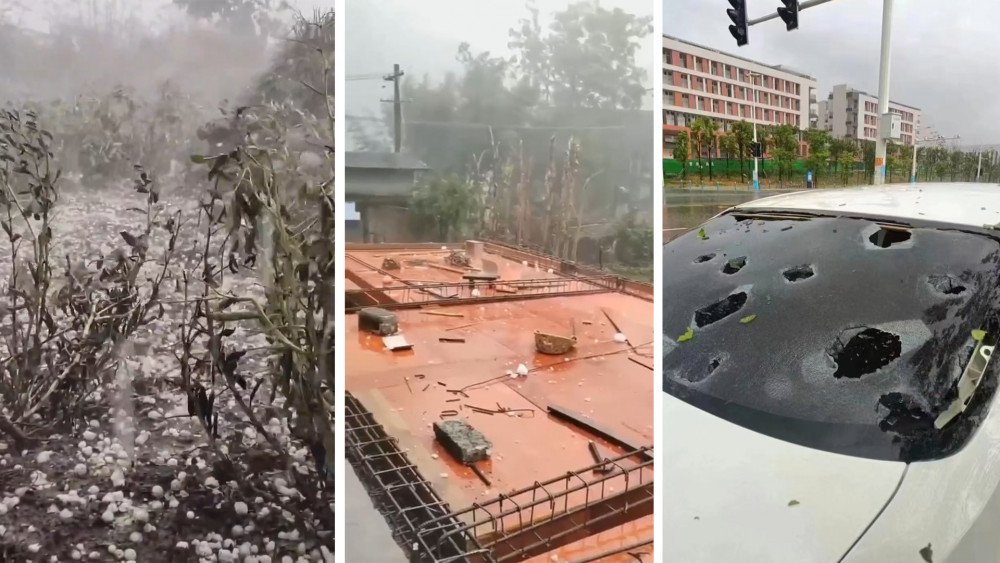
Damage and destruction from giant hail in Guangzhou, Guangdong Province, China
The total rainfall in Guangzhou from the beginning of the month until April 27 reached 455.8 mm. This is the highest amount of rain for April in the last 73 years.
India
In just a few days, residents of India experienced the onslaught of various natural disasters. Four days of continuous rain caused severe floods and landslides in the Jammu and Kashmir region. Five people died, and several were injured. Many homes were damaged, resulting in over 350 families being forced to relocate.
On April 29, the Jammu-Srinagar National Highway — the only all-weather road linking Kashmir with the rest of the country — was closed. According to a PTI report, the road was blocked by landslides in several sections, and ongoing rains hampered restoration work.
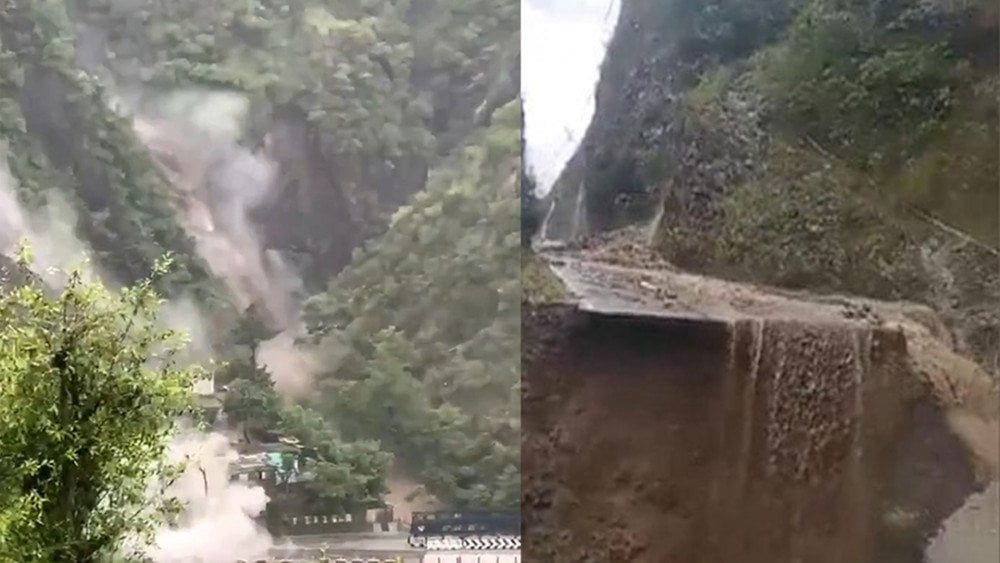
Landslides blocked traffic on the national highway Jammu-Srinagar, India
An alternative route, the Mughal Road, was also closed for at least three days due to snowfall.
In the vicinity of Sonmarg, an avalanche occurred due to heavy rain and snowfall.
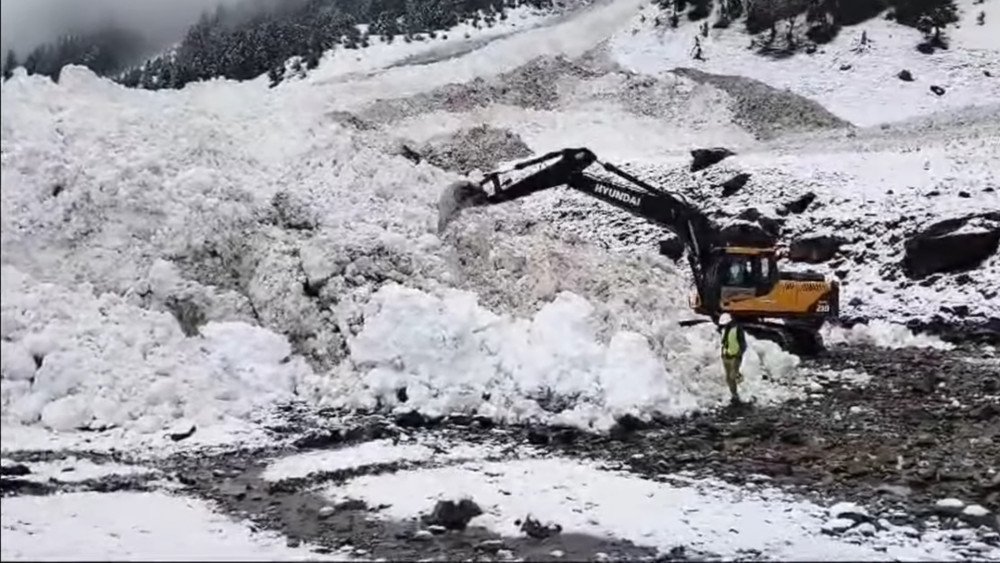
Snow clearance after an avalanche in the Sonmarg area, India
In the Kishtwar municipality, dozens of livestock died as a result of lightning strikes and torrential floods. Due to dangerous weather conditions, schools were temporarily closed. Damage to water pipes halted water supply in the town of the same name.
On April 29, a snowstorm unexpectedly hit the Lahaul and Spiti district, Himachal Pradesh, where about 18 cm of snow fell.
Heavy snowfalls stranded more than 6,000 tourists and halted traffic on key routes, including the section between the Atal Tunnel and the village of Dhundi. The rescue operation lasted all night.

Unseasonal snowfall blocked traffic on the road, Himachal Pradesh, India
Landslides also closed the Chamba-Bharmour national highway. Unseasonal precipitation caused crop damage.
A strong storm hit Guwahati, Assam, accompanied by heavy rain and hail. The storm caused widespread destruction, damaged homes, uprooted trees, and inflicted significant damage to agriculture. Power outages were reported, and vehicular and ferry services were suspended.
A wave of extreme heat engulfed much of the country. Temperatures reached record levels in states such as Karnataka, Andhra Pradesh, Odisha, Tamil Nadu, and Kerala.
The government of Odisha issued a severe heat alert. In the state capital, Bhubaneswar, the hottest day of the season was recorded with a temperature of 43.6°C.
Locals are accustomed to hot weather, but this year's heat wave has been particularly brutal. The absence of pre-monsoon showers, which usually provide some respite from the heat, exacerbates the situation.
In the neighboring state of Andhra Pradesh, the situation is no less severe, with temperatures reaching 45°C in some areas. The state government has set up special centers to assist those affected by the heat, providing shelter and medical aid.
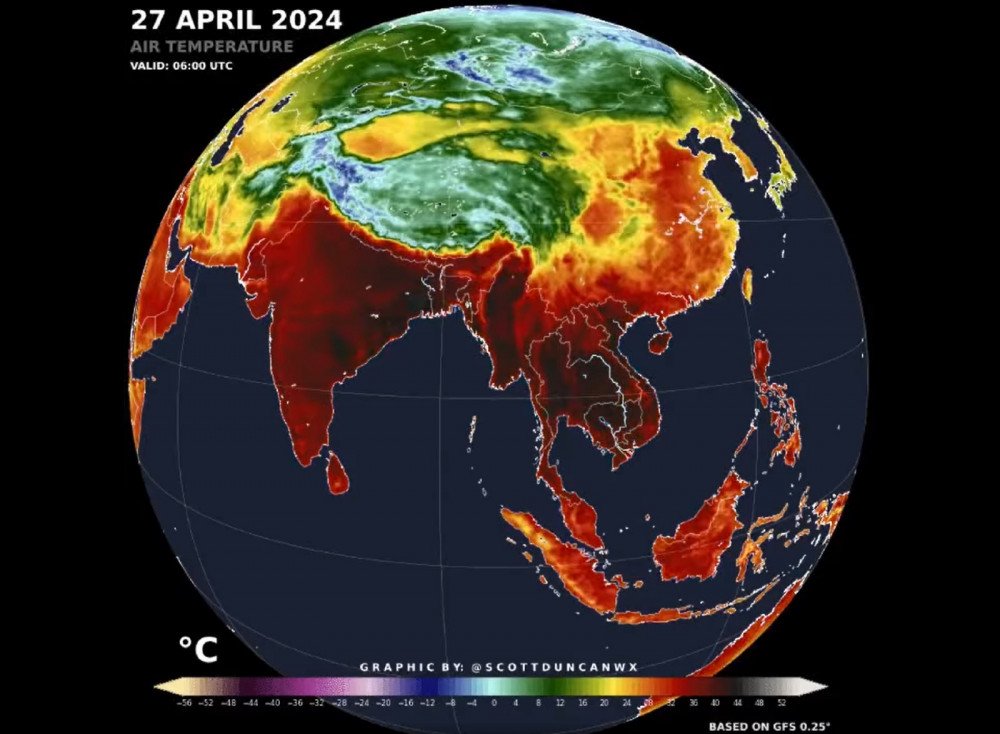
Wave of extreme heat in India
In Kerala's Palakkad district, it remains the hottest: the maximum temperature here has risen 5°C above the norm. On April 28, two fatal cases of heatstroke were recorded.
In Bangalore, the capital of Karnataka, a temperature of 38°C was recorded, the highest this year. City traffic jams became unbearable. Residents spend hours in their cars in the sweltering heat.
The heat wave also affected the power supply: several states experienced power outages due to increased demand.
Other countries in South and Southeast Asia are also suffering from abnormal heat. Millions of people in Myanmar, Bangladesh, Thailand, the Philippines, Malaysia, and China are facing air temperatures significantly exceeding historical averages.
Bangladesh
At the end of April in the western part of Chuadanga city, Bangladesh, temperatures hovered between 40–42°C. Senior observer at the Chuadanga Weather Observatory, Rakibul Hasan, said: “The district is boiling under heatwaves. People are suffocating due to excessive heat.”

People languishing from prolonged abnormal heat, Bangladesh
At least 30 people in the country have fallen victim to prolonged scorching heat. A large number of people suffered heatstroke, dehydration, exhaustion, and breathing problems. Hospitals are overcrowded. Patients were accommodated in corridors and even on staircases due to a lack of available beds.
Those most at risk are people working outdoors during the day. Yet many are forced to continue working under extreme temperatures to support their families.

Scorching heat in Bangladesh
Even machinery cannot withstand such temperatures. On April 26, due to intense heat, a fire broke out in Silk City Express train’s hydraulic brakes. At least 10 passengers were injured when they tried to jump off the train in panic after learning of the fire.
Another hazard for residents, arising from the wave of extreme heat, is the increase in snake bites. Studies conducted in the USA have shown that external temperature fluctuations directly affect snake behavior. The frequency of snake bites increases by 6% for every 0.44°C rise in air temperature.
The Bangladesh Meteorological Department (BMD) reported that “this is the first time Bangladesh has experienced a heatwave [spell] lasting for 26 consecutive days since we began recording them in 1948.” This heat wave has spread over more than 75% of the country, affecting over 50 districts.
April became the hottest month in Bangladesh, breaking all records for the past 75 years.
North America
USA
Since April 26, the central part of the USA, from Texas to Iowa, has been engulfed by a multi-day series of powerful storms, affecting over 60 million Americans. The storms were accompanied by numerous tornadoes, strong straight-line winds, and heavy rains with hail.
On April 26, the first tornado outbreak occurred. On that day, the Storm Prediction Center received 78 tornado reports from various states.
A powerful tornado passed through southwestern Iowa. It destroyed several small towns along its path. The town of Minden, with a population of 600 people, was the hardest hit.
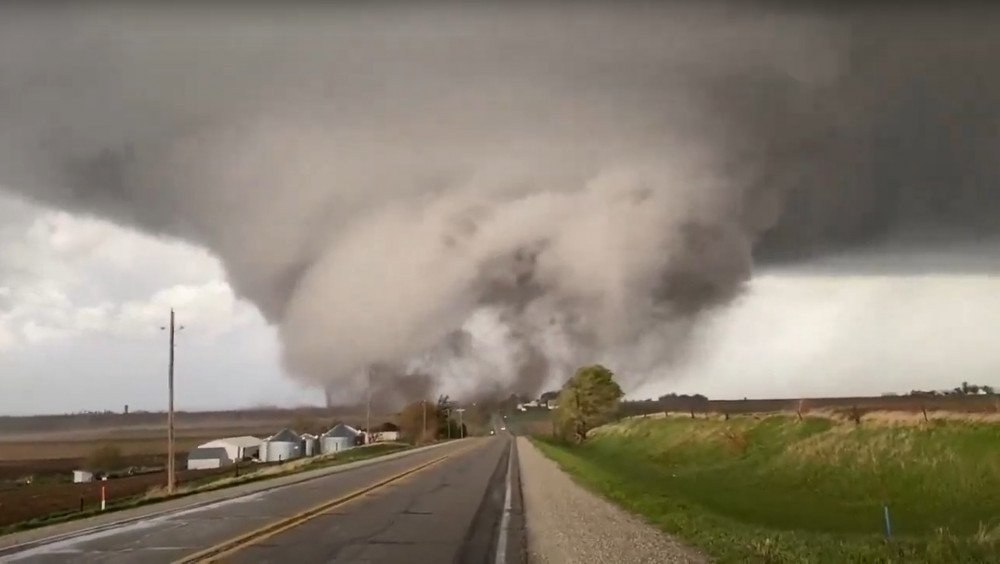
Powerful tornado, Iowa, USA
Four people were injured. Significant damage was inflicted on 180 homes, nearly half of which were completely destroyed. Many businesses were also damaged, while water and power supplies were disrupted.
In Nebraska on that day, 41 tornado warnings were issued. This was a record number of warnings for the state in one day.
The most severe damage from the tornado occurred in the area of Elkhorn in Omaha. According to the National Weather Service, this was an EF-3 tornado with peak wind gusts of 165 mph (265 km/h).
Dozens of newly built large homes were damaged, there were power outages and gas leaks. This was the strongest tornado in Omaha's history.

Strongest tornado in Omaha, Nebraska, USA
The tornado also damaged several airplanes and hangars at a local aerodrome, with twisted metal debris scattered for hundreds of yards.
In the city of Blair, north of Omaha, the hurricane caused extensive damage, with some homes being torn from their foundations. Residents shared that they had never seen anything like it.
Near the city of Waverly, a tornado knocked over several train cars, causing serious disruptions to railway operations.
Additionally, about 8 km northwest of the city of Lincoln, a strong squall caused the complete collapse of an industrial building. Inside were at least 70 workers, several of whom became trapped. Fortunately, there were no fatalities, and only three people sustained non-life-threatening injuries.
On Sunday, April 28, a devastating tornado outbreak swept through the state of Oklahoma. The National Weather Service office in Norman set a record for the number of tornado warnings issued in one day — 59. Tornadoes resulted in the deaths of four people, and at least 100 were injured. One rare EF-4-rated tornado and at least two EF-3 twisters destroyed entire communities in Oklahoma.
Severe damage was recorded in the towns of Sulphur and Holdenville. In Sulphur, a tornado crumpled many downtown buildings, tossed cars and buses and sheared the roofs off houses across a 15-block radius. In the structures that remained standing, windows and doors were blown out.

Town of Sulphur after being hit by the destructive tornado, Oklahoma, USA
About 30 people were injured.
Residents are shocked that an entire bustling city center, where exhibition halls, restaurants, and shops were located, simply vanished.
Also, heavy rains hit Oklahoma, causing dangerous floods. An emergency situation was declared in 12 counties of the state for 30 days.
On April 30, a tornado struck the town of Westmoreland in northeastern Kansas. One person was killed and three other people were injured. 13 homes and one business were damaged, and 22 homes were completely destroyed.
In just 3 days at the end of April, more than 160 tornadoes ranging from EF-0 to EF-4 occurred. Five people died, more than 100 were injured, and thousands lost their homes.
South America
Uruguay
Since April 26, Uruguay has suffered from storms with heavy rain, hail, and wind.
In the town of Solís de Mataojo, Lavalleja Department, large hail the size of up to 8 cm fell. It dented cars and broke windshields.
“The noise inside the homes was staggering,” said a local resident.
Hail also fell on the town of Las Piedras, Canelones Department, and the coastal resort of Kiyú, San José Department, damaging the roofs of homes.

Large hail the size of an egg in Uruguay
Abnormally heavy rain and hail fell in Northern Uruguay.
According to the Uruguayan Institute of Meteorology, the total precipitation over 24 hours amounted to 176 mm in the town of Isidoro Noblía, Cerro Largo Department, and 151 mm in the town of Vichadero, Rivera Department.
On the same day, strong wind gusts in the Rio Negro river area caused significant damage, toppling hundreds of trees.
Experts were uncertain about the exact cause of this phenomenon. According to one version, it could have been a microburst — a strong, short-duration downward air movement associated with thunderstorm activity; according to another, an EF-0 tornado.
On April 29, large hail also fell in the Puntas de Abrojal area, and the next day in Cuchilla de Peralta, Tacuarembó Department.
Brazil
From April 27, strong storms hit the state of Rio Grande do Sul. They were accompanied by torrential rain, destructive wind gusts, and abundant hail. Over 100 municipalities were affected. According to the official reports, 10 people died and more than 20 are missing. 4,400 people were forced to leave their homes.
On April 27, an atmospheric microburst occurred in the municipality of Santa Cruz do Sul, affecting 3,800 people and damaging at least 750 homes.
On the same day, a tornado struck the municipality of São Martinho da Serra. Fortunately, the tornado passed through uninhabited terrain, so there were no casualties or destruction.

Massive flood in the state of Rio Grande do Sul, Brazil
In the center and northeast of the state of Rio Grande do Sul, between 300 and 500 mm of precipitation fell over five days (the average monthly precipitation in April is 116 mm).
The rains caused severe floods in the town of Sobradinho, described as historic.
In the town, nearly all bridges were damaged, and one of them collapsed due to the water pressure. A chapel and several homes, mostly along the riverbank of the Carijinho river, were destroyed.

Collapse of a bridge in the state of Rio Grande do Sul, Brazil
Several stores and supermarkets were flooded. At a metallurgical plant, the level of floodwaters reached 1 m.
In the municipality of Segredo, a man died trying to cross a flooded area in a car. This was already the second death in the municipality from storms and floods.
In the region's municipalities, such as Sobradinho, Passa Sete, and Lagoa Bonita do Sul, due to dangerous weather conditions, there is a shortage of drinking water.
In just one day, April 29, in the state of Rio Grande do Sul, 298,000 lightning strikes were recorded.
According to meteorologists, the storms will continue for at least a few more days, exacerbating the already catastrophic situation in the state.
Africa
Southern Africa remains one of the regions most severely affected by the climate crisis.
The severe drought in the region has already threatened the harvest, and about 20 million people are facing severe hunger. Several countries in the region have recently declared a state of national disaster.
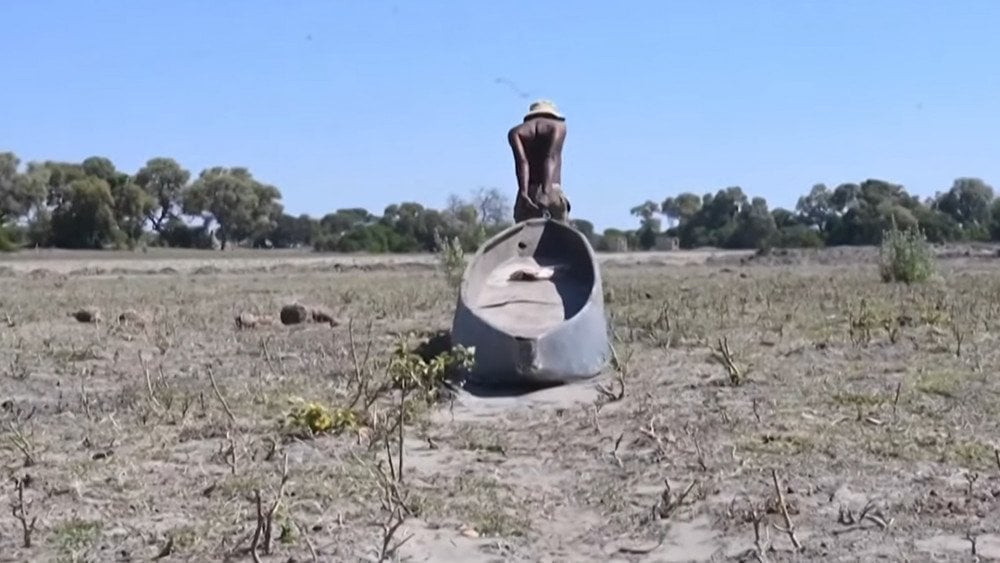
Severe drought in the southern part of the African continent
According to a report from the European Commission, the drought in Botswana started back in October 2023. Then it spread to Angola, Zambia, Zimbabwe, and Namibia and continues to affect much of southern Africa. The population of this region is suffering from a lack of food and water, leading to human deaths.
Francesca Erdelmann, director of the World Food Programme in Zimbabwe, said that last year's harvest was bad, but this season is even worse.
A local resident described the water crisis: “Dams have no water, riverbeds are dry and boreholes are few. We were relying on wild fruits, but they have also dried up.”
Heat and drought threaten the existence of many animal species.
Botswana is home to one of the world's largest populations of hippos living in the wild. Herds of hippos, which are endangered, are getting stuck in the mud of dried-up ponds and may die.
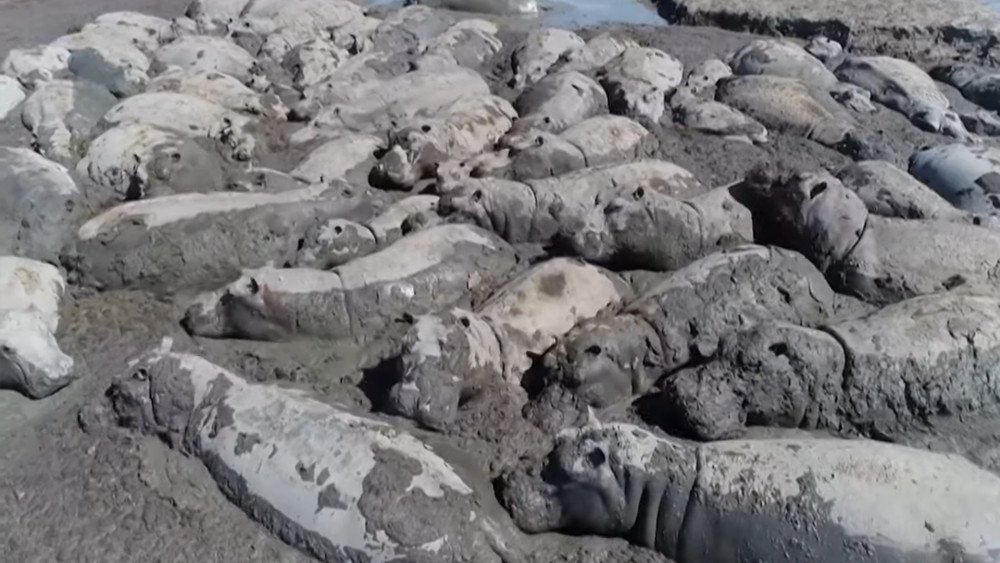
A herd of hippos stuck in the mud of a dried-up pond, Botswana
The drying up of the Thamalakane River forced herds of hippos to head for natural water reserves close to the tourist town of Maun. Hippos usually live in humid areas, as they need to bathe regularly to avoid sunburns. Without water, they can become aggressive and approach villages. Local authorities are calling for hippos to be relocated to reserves to avoid attacks on people.
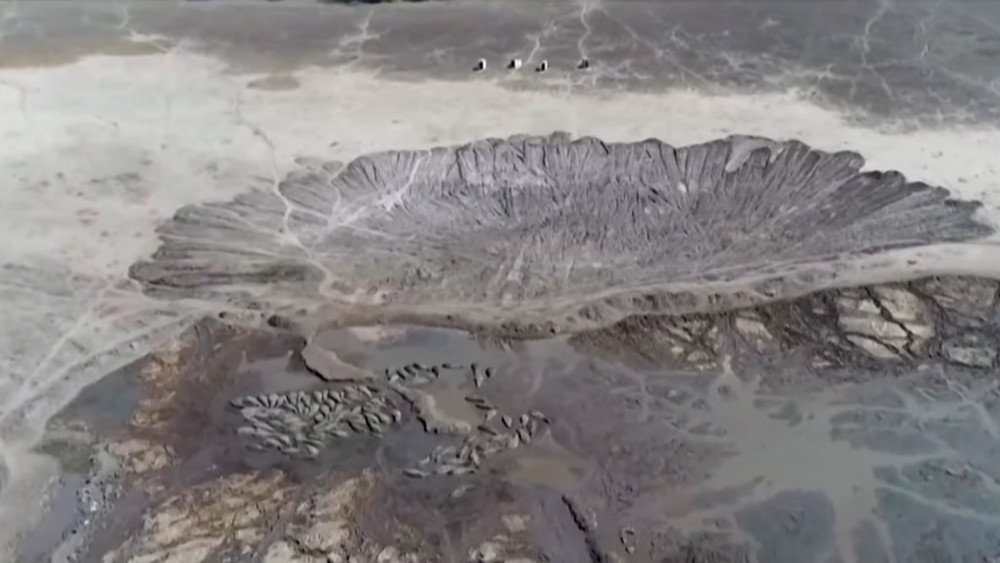
Drying up water bodies in Botswana
The frequency and intensity of natural disasters have reached unprecedented scales. Scientific data indicate that the situation will only worsen over the next 4–6 years.
However, there is an opportunity to avert a planetary disaster. The forum “Global Crisis. The Responsibility” helps to better understand the situation and determine a strategy for further action.
It is important to inform the public about the current state of the climate. When the public recognizes the threat and unites their efforts, political leaders will be compelled to collaborate with the scientific community to develop and implement effective measures to save our planet and its inhabitants. Participation of each individual in spreading information plays a vital role in saving billions of lives.
You can watch the video version of this article here:
Leave a comment